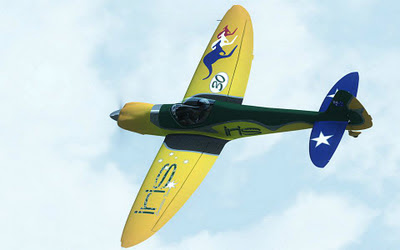Hours to date: 247.75
Well it turns out that I was making a mountain out of a mole hill with the bell crank bearing.
I thought I would have to take out the entire bearing which was going to be a real mission as it is hard to get to and I would have been working blind. It ended up being a simple case of turning the inner part of the bearing through 90 degrees and then pulling it out with a set of pilers. So I just have to replace the inner (light coloured) part and it will be all fixed.
The dumb thing I did was Dremel the edge so I could get the bell crank to slide in easier - the actual fault was that the hole on the wing was not large enough and so the bearing was not able to rotate fully - seems silly now, but should be an easy fix.
Onto the bell crank hole covers now. It is a metal plate that the factory supply with small self taping screws to fit but Pete does his a different way and I decided to follow that route. So I have drilled out the holes and then tapped a thread into them. Also made the holes countersunk on the metal plate to accept countersunk head machine screws. It feels a little more permanent than the self tappers.
I also started on the Rudder. There is not too much I can do to it without the fuselage, but I have put the counterweight in place. This involves drilling a hole as shown in the photos - then pouring 100grams of resin and 250grams of lead shot into the front part of the rudder. I sealed up the hole afterwards with a carbon washer filed to a neat fit and flocked in place.
Finally I have decided to do what Pete does with the rear wing spar and reinforce on the inside as well as the outside. Imagine working blindfolded with wet spaghetti in a confined space that your arm just fits through and you will get a feeling for what this job was like. I just stayed as 'Zen' as possible and took my time - seemed to work out okay.
I still have to put some carbon tape on the root rib, plus reinforce the rear with glass tape and flock in the rear pin support - will most likely do those jobs this week as well as reinforce the seams on the rudder.
 |
| Bell crank bearing comes out at 90 degrees. |
 |
| Bell crank hole cover with countersunk screw holes |
 |
| Hole in rudder for counterweight |
 |
| Lead shot and resin in the front of the rudder. |
 |
| Hole covered with carbon washer and flocked in place. |



























